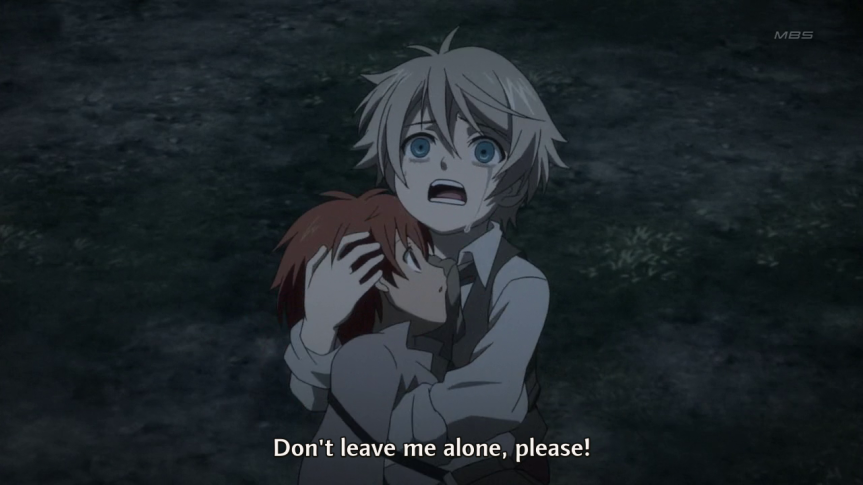An Alternate Axis
TABLE OF CONTENTS:
Chapter 1: Introduction – The Circuitry Of The Modern…………………………………………………1-11
Chapter 2: Romance – The Battleground Between Hegemony and Individualism………….12-30
2.1: Hot Gimmick and Teacher’s Pet – “Abuse Is Love” Philosophy………………….13-20
2.2:Paradise in the Postmodern……………………………………………………………………………20-30
Chapter 3: Man as the Ultimate Simulacra of Being………………………………………………………31-40
Chapter 4: The Revolution Of The Identity: Myth of Sex Roles Broken……………………………41-43
Conclusion
Appendix:
Image 1: Animepaper.net
Image 2: http://www.anime-sensei.net/2006/02/teachers-pet-manga.html
Image 3: http://www.mangafox.com/manga/paradise_kiss/v04/c015/11.html
Image 4*
Image 5*
Image 6*
Image 7*
Image 8*
Image 9: http://www.fusedfilm.com/wp-content/uploads/2009/10/ghost-in-the-shell-21.jpg
Image 10*
Image 11: http://en.wikipedia.org/wiki/File:Laughing_man_logo.jpg
Image 12*
* Taken from Personal collection.
An Alternate Axis
Chapter 1: Introduction – The Circuitry Of The Modern
Be it a castle you want to reach due to the reasons of performing miracles or a space you can reach out to your soul – we all desire to be unique – exquisitely imperfect-perfect and in connection to the world around us. The aspects that make us unique may become problematic and take a form so hideous that it may betray our expectations of it or become so overwhelming that it may engulf our known world into a realm transcendentally fantastic. What is truth? What is reality? What is romance? What is sex? What is love? What is identity? What is real? – Questions sorted out like gig-lamps [1] but deepening and twisting into labyrinths – the words illusion and real become zygotic, transparent yet distant to find a proper definition. What if the world became another set of production? Human beings another model of commodity, easily dissected and rearranged to the voyeuristic and narcissistic desires of others and ourselves. The myriads of anatomies present in the world makes dissection difficult. This paper is an exploration of alternative anime in contrast to their mainstream counterparts to illustrate how they depict the subversive, psychological and the postmodern elements that make up society today and our present selves.
The above phenomena that are stated easily illustrate our world today – be it in fiction or even an observable reality. The world, post world wars and colonialism, had become a world that no longer possessed any certainties. There were fears of an apocalypse (or, the thought that the world was already going through it) and also of a world being drastically reshaped by the beginning of abandoning olden values[2] . The world at present has become globalized and digitalized. Most individuals have access to the internet or also known as the World Wide Web. We had learned through strife and experience that old world ethics do not function accurately in an urbanized system such as ours. Identities of different kinds are established and they are presented in various layers and spheres. To be in a world so interconnected also creates confusion, misbalance and an absence of pure security.
Many popular medium such as the television shows we see and the cinema have illustrated stories of isolation and insecurity as the by-products of our urbanized and globalized world[3]. Some of these programs have become very popular as it establishes the emotional, psychological and philosophical questions and incidences of our present. However, many mainstream shows still attempt to bypass such intense and extreme phenomena and only deal with them as a form of superficial entertainment[4].
. There is one medium of animation whose origins are from Japan that have from the very beginning held a distinctive style and presentation. This Japanese Animation, now labelled as anime, has permeated every genre existing in our world – from romance, sexuality, politics, science fiction and even medical innovations, anime illustrates what are mainstream entertainments and even the avant-garde. Anime differ from cartoons of the West not only in animation style but via demographics and also the daring approach to be as explicit as possible to the truths they are concerned with. The origins of anime and its etymology are detailed below:
Anime (アニメ?, an abbreviated pronunciation in Japanese of “animation”, pronounced [anime] inJapanese,buttypically ( /ˈænəˌmeɪ/ (help·info) or /ˈænəˌmə/ in English) is animation originating in Japan. The world outside Japan regards anime as “Japanese animation”.[1] Anime originated about 1917.
While the earliest known Japanese animation dates from 1917, and many original Japanese cartoons were produced in the ensuing decades, the characteristic anime style developed in the 1960s – notably with the work of Osamu Tezuka – and became known outside Japan in the 1980s.
Anime, like manga, has a large audience in Japan and high recognition throughout the world. Distributors can release anime via television broadcasts, directly to video, or theatrically, as well as online.
Both hand-drawn and computer-animated anime exist. It is used in television series, films, video, video games, commercials, and internet-based releases, and represents most, if not all, genres of fiction. Anime gained early popularity in East and Southeast Asia and has garnered more-recent popularity in the Western World
(Wikipedia)
As we can see anime has become a product of the globalized world. It has become a subculture – not only does it possess a wide audience but also a certain openness and flexibility that common social norms do not permit (such as cosplay, which is a style of dressing like an anime character in very exaggerated and/or unique clothing styles). There are different kinds of anime and manga (in fact, though manga means comic these two has become synonymous with each other due to the styles adopted and adapted – many animes are made based on mangas and vice versa) and the most popular kinds are titled Shoujo, Shounen Seinen and Josei. Shoujo manga are usually targeted to teenage girls and the reverse is Shounen while Seinen is targeted to young adults who are male and its opposite is Josei. Shoujo manga is usually illustrated with cute designs and has feminine elements in its storyline such as romance while Shounen holds massive proportions of action and other masculine traits such as models of a supreme male figure (Wikipedia). In contrast Seinen and Josei may hold complex relationships and dark realities as its story foundations. However, these demographics are mostly prevalent in Japan; when licensed by an international company for broadcast in its national channels the labels of what is Shounen or Josei become somewhat lost and audiences are mostly determined by their tastes.
As mentioned before, our world today has uncertainties and these phenomena have permeated excessively in alternative mangas and animes. When the word alternative is used it is done so as to serve as a contrast to the word mainstream. Mainstream anime do not incorporate deep philosophical questions or psychological evaluations and examples of such can be found in the animes Pokémon, the Dragon Ball Series or even the Sailor Moon series where a protagonist merely tries to overcome foes or challenges presented to her/him and become a stronger fighter against the considered evils of the storyline. Mainstream animes still differ from cartoons of the western world as they depict blood, gore, realistic violence and nudity. The animes that are going to be discussed are not as such – they delve deeply into the folds of our psyches and our personalities many of times more deeply than movies and other forms of animations. They wage war on what is considered as the normal and they express signs of a world that, due to technology dependency, can no longer differentiate between the original and the manufactured. I had personally labelled these kinds of animes hemogenists (a portmanteau of the words homogeneous and heterogeneous) or revoyads (a portmanteau of the words revolution and Dryad) as they possess both diverse story elements fusing with various representations of truth and reality. The animes I will discuss are Paradise Kiss, Ghost in the Shell and Revolutionary Girl Utena. In contrast to Paradise Kiss, I will look into two mangas and their responses to show the existence of the subversive anime fan following.
Chapter 2: Romance – The Battleground Between Hegemony and Individualis
2.1 Hot Gimmick and Teacher’s Pet – “Abuse Is Love” Philosophy


(Images 1 and 2: “Hot Gimmick” [Left] And “ Teacher’s Pet” [Right]) {It was oriented this way on MS WORD}
Misuzu just started her dream job teaching at a prestigious high school, and she feels totally motivated. Recently, she began going out with the really hot/manly principal Kazuki, and their relationship couldn’t be better. But one day. Misuzu had sex with Kazuki’s younger brother Masahiro, who happens to be a student at the same school. This is a huge secret that they can’t tell anyone: the love affair between a teacher and a student.
(Anime-Sensei)
Hatsumi is just a regular girl, living in your regular company apartment complex, with your regular neighbors, but when her sister asks her to go buy a pregnancy test, everything gets out of hand. Afraid for her family’s reputation, Hatsumi gets black mailed into becoming the neighborhood bully’s slave. Then Hatsumi’s childhood crush moves back into the neighborhood, and it seems that all the guys in the neighborhood are out to get with her. It’s neighbors in love, and it’s scandalous.
(Anime News Network)
Above are two descriptions – the first is of Teacher’s Pet and the second is of Hot Gimmick. Both of the mangas were drawn by the mangaka (manga artist) Miki Aihara. Both of them are shoujo mangas. Both of them are known for their great art. Both of them have extremely passive females who pander to ever whim of their tormentors. Then, without any valid reasons, fall in love with their tormentors. Also this love is considered a purer love in the context of the stories – a true, great union of two souls. What better tool does patriarchy need to enslave and subjugate females than a woman writing romances as violent and disturbing as these? Also, the stories are sexist even to males – it depicts that all men who are not virile and agressive cannot obtain desirable female partners and if they are nice and kind then they will rejected by the females they desire. It is as though Aihara wants us to choose the lesser of the evils as the other male love interests of both mangas are either too plain i.e. nice or trying to rape the protagonists using more devious methods. The exploration of these two mangas is to illustrate the contrast of the subversive animes/mangas that will be explored later on.
The information above excludes two things: Hatsumi gets physically, sexually and emotionally tormented by Ryoki, the bully she falls in love with. Secondly, Misuzu does not have consensual sex with Masahiro but is raped by this student while she is alone with him in a classroom[5]. Masahiro rapes Misuzu due to some complications he has with his brother. Also, after the rape Masahiro claims that Kazuki, his brother and the principal, had a woman rape him while he watched thus his rape of her was an act of revenge. The manga is not only disturbing but illogical – an insult to women and men who have received extreme abuse.
‘Pornography is the theory, and rape the practice’, wrote radical feminist Robin Morgan in 1980 (Morgan 1980:139). This memorable slogan has certainly left its imprint on feminist discussions about links between pornography and sexual violent against women.
(Bristow 148)
A fifth definition of popular culture, then, is one which draws on the political analysis of the Italian Marxist Antonio Gramsci, particularly on the development of the concept of hegemony. Gramsci uses the term hegemony to refer to the way in which dominant groups in society through a process of ‘intellectual and moral leadership’ win the consent of the subordinate groups in society…
(Storey 13)
The passages quoted above serve as the foundations of responses to the Hot Gimmick and Teacher’s Pet. The people who love Hot Gimmick state that relationship is quite beautiful and it is unique, and not boringly depicted. Though it is true that the story has great plot twists matters remain that it still promotes “ the normalization of an abusive relationship” (Wikipedia). Some responses to Hot Gimmick state that though the manga pushes feminism out of the way it is still fictional thus can be enjoyed. However, there are many irate readers of Hot Gimmick and one blog post clearly demonstrates the irritation and frustration the story generates:
…Let me say again, I had very high hopes for the series, expecting all this to teach Hatsumi some important lessons and provide opportunity for character growth. She doesn’t. She’s still the same insecure, wishy-washy girl at the end of the series that she is at the beginning, still being ordered around by Ryoki, and that’s the part that’s so frustrating. What’s the point in spending three years and around 2000 pages on a series when the lead doesn’t change or grow?
Slighty Biased Manga
Teacher’s Pet has similar responses [6]. Both stories illustrate what Rosalind Coward and Janice Radway spoke of the Harlequin romance novels, as documented in John Storey’s “Gender and Sexuality” – that sexuality is portrayed as a male instinct and that it is the woman who does not actively orchestrate a sexual drive but is “awakened” by an aggressive male who leads her to the world of sexuality.
The mangas Hot Gimmick and Teacher’s Pet do sensationalize abuse as romance. But most of the responses to these mangas are critical and display a sense of loathing. The responses indicate either some convoluted senses of enjoyment or delusional perspectives concerning romance or utter hate and disgust for dissatisfying plot elements. These critiques of the mangas display some aversion to the dominant models of what romance should be like.
2.2 Paradise in the Postmodern

(Image 3: Paradise Kiss [Manga] Modelling shoot)

(Image 4: Paradise Kiss [anime]: Yukari as a model)
The traditional Shoujo romance depicts usually a passively, idiotic girl who falls in love with an aggressively, manipulative boy (regarded as intelligent) and is somehow rescued by him i.e. transition from boring to risqué lifestyle is a power only he possesses and he gives it to her with his love. However, as we can see with the majority of the responses to Hot Gimmick and Teacher’s Pet that these are dissatisfactory progressions. Firstly, they are phallocentric: the male possesses more than ample power of the female – despite his psychological instabilities he is marked still as superior to the female. Secondly, the damsel in distress is an impoverished mass of character whose interactions are based on no new character developments. The mangaka of such anime/manga of Shoujo promises that the female protagonist will become empowered and resolve her issues, however, as we have seen, that is not the case. The cycle of slavery is repeated; rather than being a free individual the girl chooses subjugation in its coarsest as a model of “love” and “liberation.” She is a slave now to her lover.
This is not a satisfying solution for the modern reader. The evolution of Shoujos are sometimes seen with out-of-the-box mangakas like Kaori Yuki whose main characters are sometimes male who have unhidden dark and twisted storylines (not making absent any redeeming qualities). However, a true postmodern romance would be Paradise Kiss by Ai Yazawa.
Paradise Kiss is the story of Yukari Hayasaka. She is eighteen years old and is studying for entrance exams that would enable her to get into a good university. However, there are some problems with this wish – she is not academically brilliant and these are desires imposed on her by her mother who has always pressurized her to succeed academically (Anime News Network). Aside from school and cram school Yukari has no life. She has never had a boyfriend or any kind of other social life. Until, she is whisked away by a group of fashion students who want her to model for them. Initially, she believes they are too odd and indirectly insults their devoted to which an angry Arashi, her friend later on and one of the group, tells her that she is stuck-up just because she was from a prestigious high school. He states that their work on making dressing is their passion and is their art-form and she has no right to treat it condescendingly. Yukari leaves their atelier (what they call their workshop) feeling confused as she has never had an experience similar to this. The next boy a handsome man by the name of Jouji “George” Koizumi comes up telling her he has the ID she dropped in the workshop with him. But instead of giving it to her he merely takes to the group’s art college and gives her a haircut (just a trim of her bangs). Yukari, whose life has been a mundane routine till now, becomes intrigued with the group who calls their label “Paradise Kiss” (hence the title) as they are bold, daring, impulsive, individualistic and outspoken. Yukari agrees to be their model – finally resigning from the life imposed upon her.
The journey of Yukari from possessing low self-esteem and being passive to being confident and an individual in her own right is a remarkable one. She runs away from home when her mother does not agree to acknowledge her dreams of becoming a model, has a relationship with George who is the first person she has sex with and even becomes a professional model. However, it was not an easy process – in the beginning she has a crush on an intelligent boy in her class called Hiroyuki who constantly worries about her education after she leaves school (he tries to persuade her to finish high school at least); though Yukari had thought a boy like him would never fall for someone like her. She returns to her mother after a while (who breaks down in tears as she was worried for her daughter and accepts Yukari’s decision) after she breaks away from George when she realizes he is too eccentric and controlling thus their romance cannot be. Initially, George aids Yukari in becoming a stronger woman and making her own decisions (Wikipedia). However, he is too selfish and doesn’t always respond affectionately or reasonably concerning Yukari’s feelings. Yukari in the end realizes that though initially she was also attempting to become a model to be liked by George she now only wishes to do it because she loves it and it is her decision. At the conclusion of the story, Yukari ends up with Hiroyuki, a more understanding and affectionate male, who had fallen in love with her as well.

(Image 5: Yukari wearing the dress George had designed for her)

(Image 6: Yukari as the more confident woman)
The show has the postmodern concept of not instilling what is high culture and low culture; be it from academics to fashion – it gears itself to show that people have distinct ambitions and they have their diverse personalities. George and Isabella are also great models against the traditional markers of sexuality. George is masculine in the sense he is sexual but he is not the stereotypical man – he is bisexual and a designer. Isabella is actually a man named Daisuke and is a cross-dresser (Wikipedia) who had confessed to George that he couldn’t live like a boy when they were young thus George designed his first dress which was a dress to help transform Daisuke into Isabella.
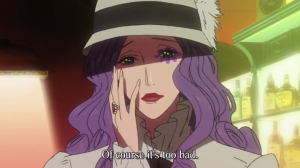
(Image 7: A picture of Isabella)
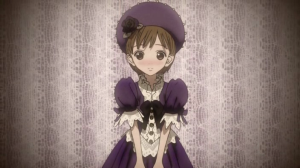
(Image 8: Daisuke wearing the dress George had designed from him)
The show incorporates what Ihab Hassan had spoken on one of the labels of the postmodern: “shall we simply live and let others live to call us what they may?” (Hassan 148). Postmodernist texts do not make judgments nor does it have a set behavioural apparatus to which characters must follow. It in fact, incorporates what Michel Foucault had spoken of concerning sexuality:
Sexuality must not be described by a stubborn drive, by nature alien and if necessity disobedient to a power which exhausts itself in trying to subdue it and often fails to control it entirely… There is no single, all-encompassing strategy, valid for all of the society and uniformly bearing on all the manifestations of sex.
Isn’t it true in our society today definitions of sexuality have blurred? Isn’t it true that right and wrong have transcending their traditional models? Paradise Kiss is an anime that illustrates the relationships and personalities of our world – never fairy-tale perfect but exquisitely challenging and imperfect where individuals do not become just plain masculine or feminine models but address that they are distinct with tastes that are their own.
Chapter 3: Man as the Ultimate Simulacra of Being
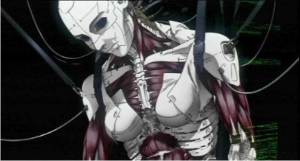
(Image 9: Motoko having her new body being made)
When you are dancing, a beautiful lady becomes drunken.
When you are dancing, a shining moon rings.
A god descends for a wedding
And dawn approaches while the night bird sings.
God bless you. God bless you.
God bless you. God bless you.
(Anime Lyrics)
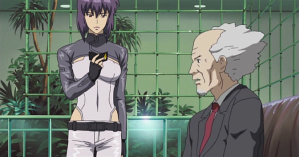
( Image 10: Motoko standing next to her chief)
Ghost in the Shell (攻殻機動隊 Kōkaku Kidōtai?, literally “Mobile Armored Riot Police”) is a Japanese multimedia franchise composed of manga, animated films, anime series, video games and novels. It focuses on the activities of the counter-terrorist organization Public Security Section 9 in a futuristic, cyberpunk Japan.
The first entry in the franchise was Shirow Masamune‘s Ghost in the Shell manga, first published in 1989 in Young Magazine. A collected edition was released in 1991; a sequel, Ghost in the Shell 2: Man/Machine Interface, was released in 2002; and a serialized manga, Ghost in the Shell 1.5: Human-Error Processor, was released in 2003, which contained material that was planned but not included in the sequel.
The manga series has been adapted into two anime films, Ghost in the Shell and Ghost in the Shell 2: Innocence; two anime television series,Ghost in the Shell: Stand Alone Complex and Ghost in the Shell: S.A.C. 2nd GIG; a film based on the television series’ continuity, Ghost in the Shell: S.A.C. Solid State Society; and three video games: one PlayStation game, one PlayStation 2 game, and one PlayStation Portablegame. The films and anime were produced by Production I.G.
Ghost in the Shell is a futuristic police thriller dealing with the exploits of the cyborg Motoko Kusanagi, a member of a covert operations division of the Japanese National Public Safety Commission known as Section 9. The unit specializes in fighting technology-related crimes. Although supposedly equal to all other members, Kusanagi fills the leadership role in the team, and is usually referred to as “the Major” due to her past rank in the Japanese Self-Defense Forces. She is capable of superhuman feats, and bionically specialized for her job — her body is almost completely mechanized; only her brain and a segment of her spinal cord remain organic.
(Wikipedia)
In a future where everything to your body is manufactured, how can you define yourself? In a world where your mind is another mass of digital wires can you say your thoughts are your own and not hacked and implanted into you? Ghost in the Shell is an anime that explores the simulacra that the soul and being becomes when cybernetics replace the originality of flesh. As Jean-Francis Lyotard had spoken in “Defining The Postmodern”:
The development of techno-sciences has become a means of increasing disease, not fighting it. We can no longer call this development by the old name of progress. This development seems to be taking place by itself, by an autonomous force or ‘motricrity’. It doesn’t respond to a demand coming from human needs. On the contrary, human entities (individual or social) seem always to be destabilized by the results of this development.
(Lyotard 1614)
The simulacra that permeate the universe of this animes are vast – the one consistent in all of them is Motoko’s inner turmoil that she is not a true human being – the song quoted above is played hauntingly when Motoko’s new body is being made: it actually promotes what Lyotard has spoken of technology – though addressed as a divine process it actually suffocates the humanity out of Motoko leaving her inwardly questioning what makes her human.
In The Stand Alone Complex series, Motoko faces the simulacra of identities – in the first series it is the ambiguous and clandestine nature of a person who calls himself “The Laughing Man”, adopted from J.D Salinger’s character of the same name, (Wikipedia). In the second series a collective calling themselves “The Individual Eleven” become terrorists to overthrow the Japanese government’s ’policies and start a civil war.
The states for a simulacrum to form, as Jean Baudrillard suggests, are as follows:
- It is the reflection of a basic reality
- It masks and perverts a basic reality
- It masks the absence of a basic reality
- It bears no relation to any reality whatever: it is its own simulacrum.
(Baudrillard 196)

(Image 11: The Laughing Man Logo)
It should be noted that no one had seen the face of “The Laughing Man.” Only records of his attire are documented by men whose brains were not computerized – as this individual is a master hacker who can hack into people’s electronic optical nerves and make them see nothing when he goes past them. The insignia above is the logo through which people see him when he is around in the vicinity. We later find out in the series that a young cyborg only called Aoi – is “The Laughing Man.” He had adopted this secret persona because he was actually fighting against this corporation which was selling the wrong medicine to a cybernetic body related disease. The logo was actually fashioned after “The Sunflower society” logo – a hospital in the storyline of this anime who were the actual producers of the right vaccine, the Maria vaccine, to cure the disease. The logo’s lines are adopted by the lines spoken by Holden Caulfield, the protagonist of the novel “The Catcher in the Rye” by J.D. Salinger (Wikipedia). He, himself, states that he doesn’t know who the real Laughing Man is. He tells Motoko that he stumbled on some files concerning the corporation’s mishandling of distributing medicine while in cyberspace that mentioned Laughing Man and he adopted the persona. Thus he forged a simulacrum of the unknown original Laughing Man.
In the Second Gig series, “The Individual Eleven” collected claim that they were influenced by a Russian essayist by the name of Patrick Sylvester. In actuality, there is no Patrick Sylvester or his essays – all this is cyber-brain manipulation of a man called Gouda who plans to create a “hero” of the public with these essays and create a civil war in Japan so that control of the internal networks of the Japanese government would be his. So there was a political incident in the storyline of the anime where Japanese rebels moved the hearts of the people with their patriotism but Gouda manipulates this information for himself.
Though the events are futuristic, the events in Ghost in the Shell are reminiscent of society today. Are we not so connected to the internet that our wired lives and our non-web worlds are fusing? Does anyone really know what were the events surrounding 9/11 and the subsequent war in Iraq? Can anyone truly estimate how many American soldiers and Iraqi people die every day due to the war? Can anyone tell if Osama Bin Laden was the perpetrator of the crimes of 9/11 or was it an elaborate ruse formulated by the very CSI the people trust? Was it just a war to gain Iraqi oil? The political and economical are nefarious networks and what Ghost in the Shell shows in fiction actually occurs in our world every day.
Chapter 4: The Revolution Of The Identity: Myth of Sex Roles Broken
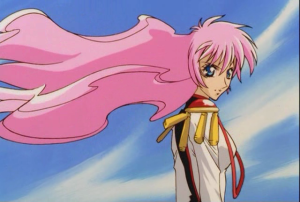
(Image 12: Utena)
Revolutionary Girl Utena (少女革命ウテナ Shōjo Kakumei Utena?) is a manga by Chiho Saito and anime directed by Kunihiko Ikuhara.
The main character is Utena Tenjou, a tomboyish teenage girl who was so impressed by a kind prince in her childhood that she decided to become a prince herself (expressed in her manner of dress and personality). She attends Ohtori Academy, where she meets a student named Anthy Himemiya, a girl who is in an abusive relationship with another student. Utena fights to protect Anthy and is pulled into a series of sword duels with the members of the Student Council. Anthy is referred to as the “Rose Bride” and is given to the winner of each duel. As Anthy is thought to be the key to a coming revolution, the current champion is constantly challenged for the right to possess the Rose Bride.
This anime, called Utena for short, is a postmodern fairytale completely breaks the foundations of the myth surrounding gender as the prince here is a woman. As Roland Barthes said that Myth was a form of speech thus the myth here is that the prince is always a man. When the former prince Dios, who has mutated into Akio attempts to usurp power from Utena for becoming into a prince she, instead of falling prey to his seductions she breaks free from all that was holding her (the sorrow for the loss of her parents and her former prince Dios) and helps Anthy get free and becomes a prince herself in the end. In the postmodern, gender roles are never concrete nor are they essential. They can be as flexible and dynamic as possible.
Conclusion:
The animes, Paradise Kiss, Revolutionary Girl Utena and Ghost In The Shell are hemogenists or revoyads because of their connection to our society today. Aren’t gender roles interfering with individualism even today? Aren’t there situations too secretive to understand? Aren’t there too many forces in the world that try to control us despite what we do? These anime represents society as it is today – unpredictable and uncertain but offering, in its own way, a new movement of thought – a new look into the labyrinths of the world. They may be animations but they show the world as it is today.
[1] In my first semester I had done Virginia Woolf’s “Modern Fiction” an essay on the importance of how fiction needs a change to operate in the world today. Her line was “life is not a set of gig-lamps” – this line is an elemental phrase to define both a postmodern reality and the difference between reality and illusion. I had retained it in my memory since my earlier readings of it.
[2] Professor Kaiser Huq had given lectures concerning the reshaping of the world this semester in the course “Modernism”. This information is a product of attending his classes.
[3] One example would be the 2004 movie The Machinist starring Christian Bale, an emaciated insomniac who cannot tell the differences between reality and illusion – this information is taken from Wikipedia.com.
[4] In the book New Cultural Studies: Adventures in Theory David Boothroyd in the chapter “Cultural Studies and the Extreme” marks this as a current social phenomenon.
[5] This information shocked me as initially upon reading the synopsis I had thought of this manga as a teacher/student romance. Though it is advertised as such it is not. I had read the entire manga and all the times Misuzu and Masahiro have sex it is by coercion – first the rape and other times by unfair circumstances/persuasions.
[6] All of the responses that are being discussed here where found in popular forums such as the one in Mangafox.com. Some of them also came from blogs that I visited some time ago. As I was introduced to the series two years ago I had read a myriad of criticism based on it so I am relating from previous and recent readings both.
Bibliography
Barthes, R. (1972). Myth Today. In R. Barthes, Mythologies (pp. 109-151). London: Vintage.
Bristow, J. (2007). Discursive Bodies. In J. Bristiow, Sexuality (pp. 169-170). Routledge.
Bristow, J. (2007). Pornographic Materials. In J. Bristow, Sexuality (pp. 148-149). Routledge.
Ghost In The Shell. (n.d.). Retrieved April 1, 2010, from Wikipedia: http://en.wikipedia.org/wiki/Ghost_In_The_Shell
Revolutionary Girl Utena. (n.d.). Retrieved April 1, 2010, from Wikipedia: http://en.wikipedia.org/wiki/Revolutionary_Girl_Utena
Storey, J. (1993). Gender and Sexuality. In J. Storey, An Introduction To Cultural Theory (pp. 120-126). Athens: The University Of Georgia Press.
Storey, J. (1993). What is popuar culture? In J. Storey, An Introduction To Cultural Theory (pp. 12-13). Athens: THe University Of Georgia Press.






















